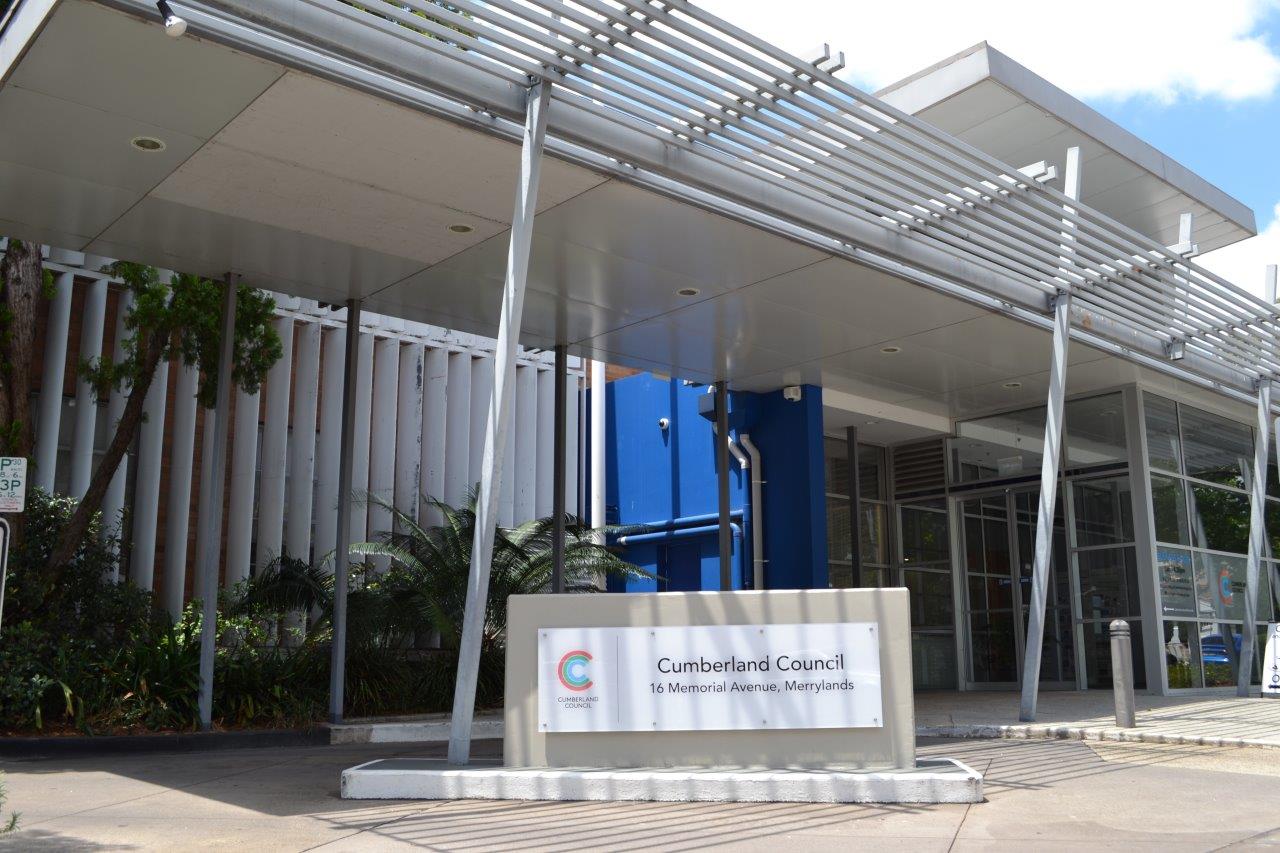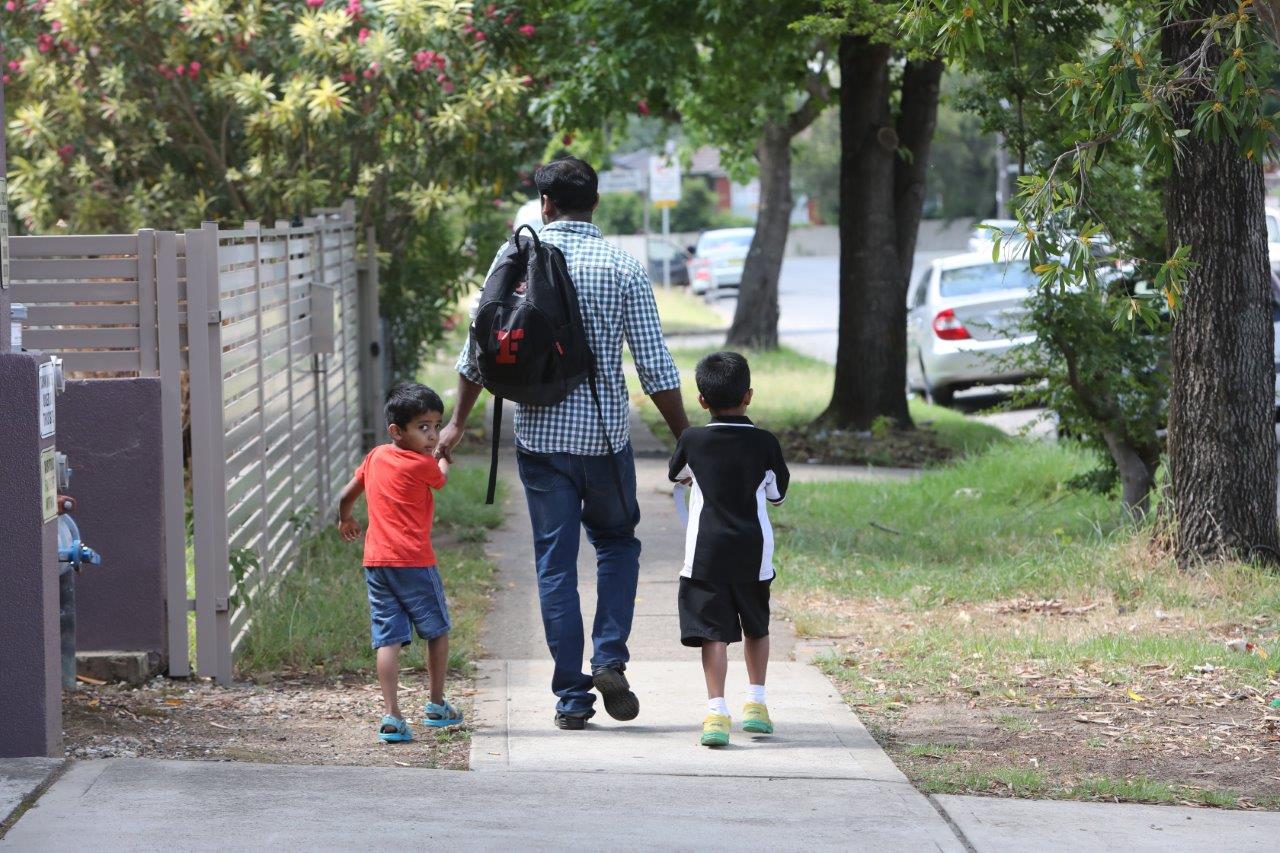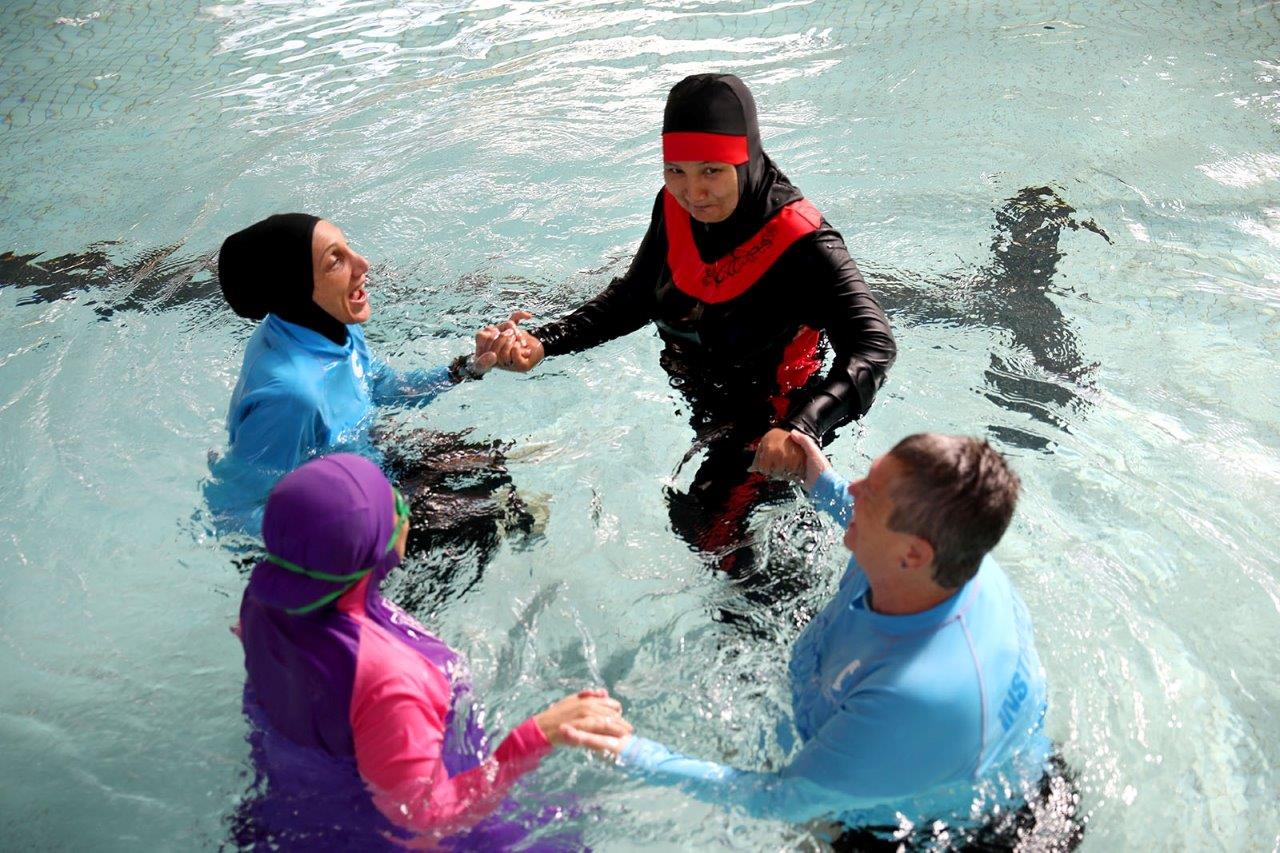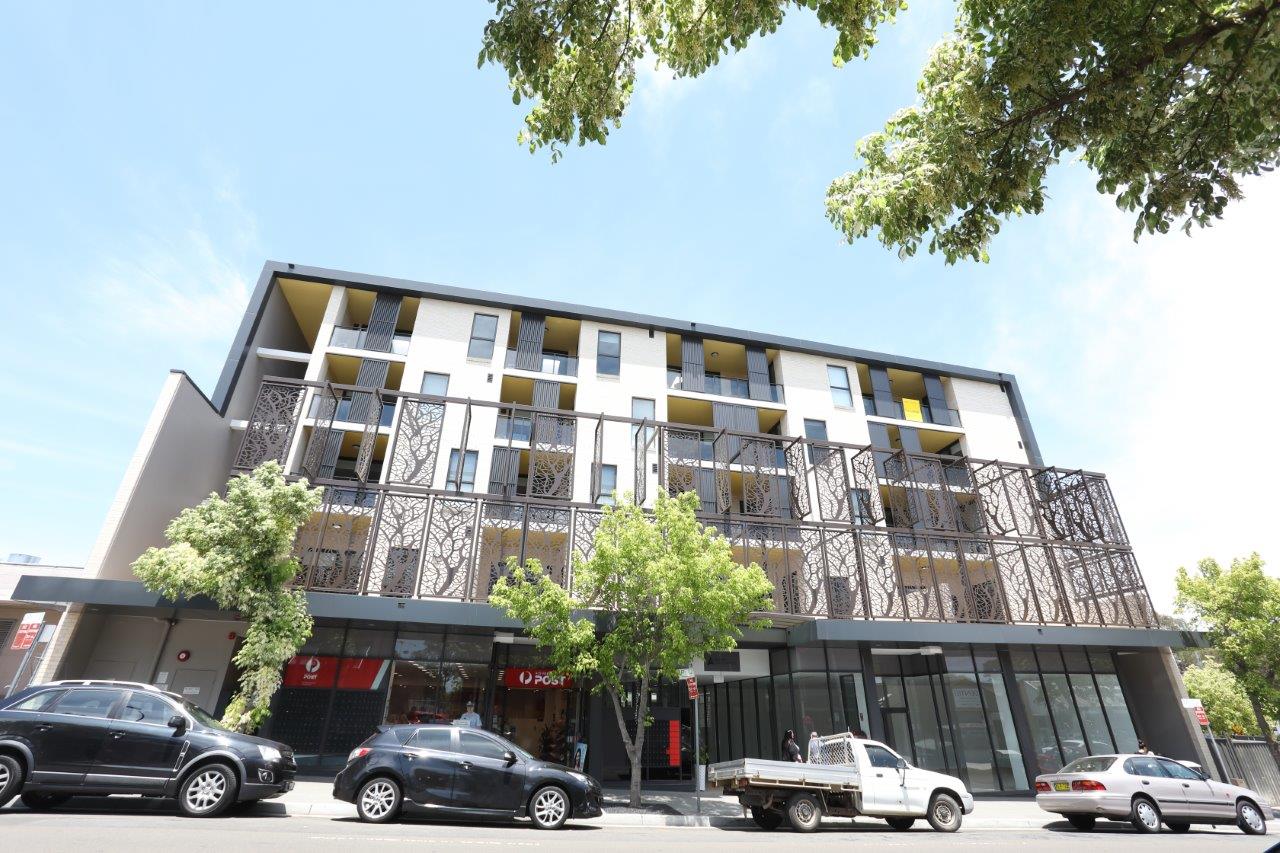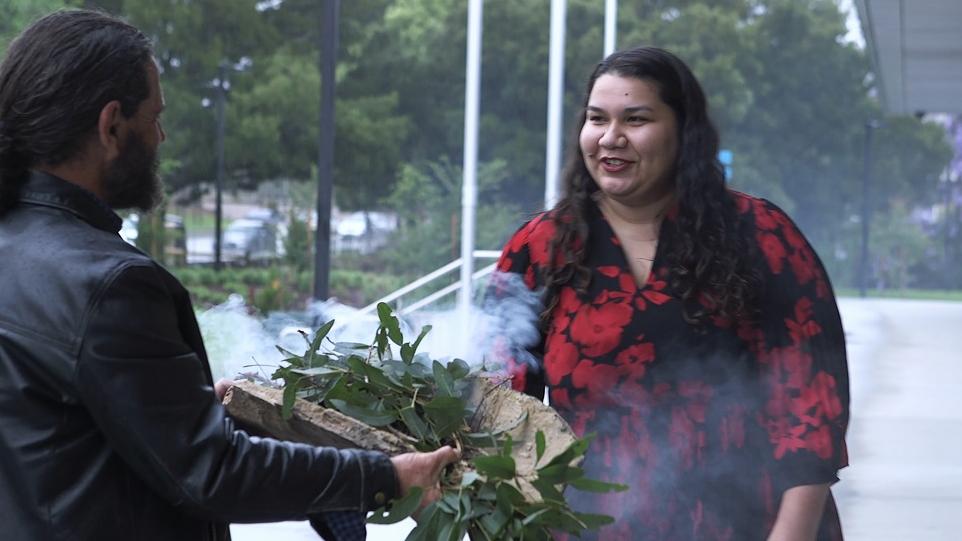
Why they are used
Observing Aboriginal and Torres Strait Islander protocols at meetings, events, conferences and forums demonstrates respect. It also shows appreciation for the cultural traditions, history, diversity and contribution made by the Aboriginal and Torres Strait community as the first people of this nation.
Download a copy of the Cumberland Aboriginal and Torres Strait Islander Protocols and Guidelines
Key protocols and guidelines include:
Protocols of respect
In any event, meeting, forum or conference, paying respect at the beginning of the function is the appropriate protocol when working with both Aboriginal and non-Aboriginal people. This could involve either a Welcome to Country or an Acknowledgement of Country.
These protocols:
- Recognise the knowledge, standing and status of Aboriginal people in Australian culture and history
- Demonstrate respect for Aboriginal people
When planning to include a Welcome to Country and/or an Acknowledgement of Country, it is important to consult with Aboriginal people of the community where the event will take place. This ensures that the event or meeting pays the appropriate level of recognition and involves the right people for the land on which you meet.
The Darug people are the traditional custodians of the land on which Cumberland City Council stands.
Welcome to Country
A ‘Welcome to Country’ is where a Traditional Owner or descendant of the original Aboriginal clan (usually elders called Uncle or Aunty) welcomes people to their land at the beginning of a major event, ceremony or meeting.
This is an important mark of respect for Aboriginal people and history. It recognises respect for the land and culture. It is used to welcome people who visit and meet on the traditional area and set agreements of behaviour.
The ‘Welcome to Country’ should be undertaken by a traditional Aboriginal Elder of the specific land where the event is taking place.
It should be performed at all significant or major Council and community events, including:
- Australia Day and Festivals
- Openings and launches
- Wherever it is appropriate to welcome people into the local community.
Guidelines:
- The Elder or representative of the Aboriginal community performing the Welcome to Country should always be seated alongside other dignitaries and speakers at the event.
- Traditional Aboriginal Elders should be asked if they would like to be referred to as Uncle or Aunty.
- There is no exact wording for a Welcome to Country and how it is performed is dependent upon the decision by the elder (Uncle/Aunty) undertaking the role.
- It is carried out through a formal process, and maybe a speech or a performance, such as a traditional dance, song or smoking ceremony or a combination of these.
The following is an example wording of a Welcome to Country speech, from an Aboriginal perspective:
“Hello my name is [insert name of speaker] a representative/Elder of the Darug people. I would like to begin by paying my respect to the Darug people, the traditional custodians of this land where we are meeting upon today. On behalf of the traditional custodians [the Darug people] I welcome you all.”
A non-Aboriginal person, or an Aboriginal person from a different community, CANNOT do a ‘Welcome to Country’. They should do an Acknowledgement of Country/Traditional Owners.
Please note: a "Welcome to Country" ceremony is a right and not a privilege.
Acknowledgment of Country/Traditional Owners
Using this protocol allows non-Aboriginal people and Aboriginal people not from that specific land to show respect for Aboriginal people who are from that land. This respect extends to the heritage and the ongoing relationship of traditional owners with the land where the event, meeting, function or conference will take place.
- Acknowledgement of Country’ can occur with or without a Welcome to Country
- It may take place when traditional Elders are not available to provide an official Welcome to Country
- A chair or speaker begins the meeting by acknowledging that the event or meeting is taking place in the country of the traditional owners. In Cumberland, this is the Darug people.
The following is considered a standard wording for an Acknowledgement of Country by a Council staff member:
“Cumberland Council acknowledges the traditional custodians of this land, the Darug people, and pays respects to their elders both past, present and future.”
Where the person doing an Acknowledgement of Country is an Aboriginal or Torres Strait Islander person, they are required to use the following format for their acknowledgment:
- Name
- Mention their Tribe
- Where they come from
- Permission from local Elders
- Acknowledge local Aboriginal Peoples
The following is an example of wording from an Aboriginal perspective:
“I am (name) an Aboriginal person from (tribe/clan) and I acknowledge the traditional owners of the Darug nation we are meeting on. I also acknowledge any Aboriginal Elder present here today and pay my respect to the Elders both past and present.
It is recommended that Council, community organisations, and businesses perform an Acknowledgement of Country when running meetings, small-scale community programs or events.
Recommended Practice:
- The Acknowledgment of Country is a minimum requirement for all Council and community events and meetings.
- NOTE: In the case of opening an important event, a “Welcome to Country’ should be performed, not an ‘Acknowledgement of Country’.
Smoking Ceremony
The Smoking Ceremony aims to spiritually cleanse the space in which the ceremony takes place, so as to allow peace and recognise the importance of event or meeting. Given the significant nature of the ceremony, smoking ceremonies are usually only performed on special occasions or at major events and places of spiritual significance.
- NOTE: This is a religious ceremony and should only be performed with permission from the Traditional Owners.
- It is conducted by Aboriginal people with specialised cultural knowledge, such as an Elder, Aboriginal people with the spiritual knowledge, or cultural teacher.
- The Traditional Owners also performed other rituals – such as water cleansing ceremonies with song and dance.
- Most Aboriginal dance groups provide Smoking Ceremonies as part of their services but it is a separate religious ceremony.
- Smoking Ceremonies are more appropriate for outdoor occasions due to ventilation requirements.
Recommended Practice:
A Smoking Ceremony should be performed on special occasions or at major outdoor events, such as:
- Australia Day
- Festivals
- Sorry Day
- Cumberland Reconciliation Day
- Reconciliation and NAIDOC Week
- Other culturally significant activities when permission has been given by the Traditional Owners.
Note: Council’s Aboriginal and Torres Strait Islander Consultative Committee or Community Development & Planning Team can provide contact details for Traditional Owners and suitable Aboriginal people who can be engaged for performing smoking ceremonies.
Gender protocols: Men’s and Women’s Business
- Aboriginal society regards some information as specific and sacred to either men or women.
- This knowledge is sacred and recorded in a way that only men or only women can access.
- Most people have difficulty in distinguishing between men’s and women’s business.
- Please seek advice from the Traditional Owners about when Men’s and Women’s Business could arise and how to deal with it appropriately.
Sacred sites
Sacred sites are places of cultural significance to Aboriginal people.
- They may be parts of the natural landscape such as hills, rocks, trees and springs that are not always spectacular or interesting to non-Aboriginal people.
- They may be significant because they mark a particular act of a created being.
- They also include burial grounds and places where particular ceremonies have been held.
- In some cases the act of identifying or talking about a site may in itself be a violation.
Custodians have responsibilities to protect and maintain sacred sites. This may be done by holding ceremonies, visiting the places, and singing the songs associated with them.
An Act to maintain sacred sites
Under the National Parks and Wildlife Act, the National Parks and Wildlife Service is responsible for the care, control and management of all historic sites, reserves and Aboriginal areas. More information is available from the NSW Office of Environment and Heritage website under the National Parks & Wildlife Act.
Local sites
- There’s a number of significant Aboriginal sites in the Cumberland area around Duck River and Prospect Hill, Pemulwuy.
- One of these sites was a meeting place where exchanges took place between the 4 main tribes of the Sydney area: Darug/Darug, Gandangara, Guringai and Tharawal people.
- Further information about the cultural heritage and significance of the Duck River to the Wategora/Wangal people and documentation of sites and places may become available through the ‘On the Dreaming Tracks’ project.
Note: These sites must not be visited without contacting a Traditional Aboriginal Elder or knowledge holder of the area.
Confidentiality
- Applies to traditional Aboriginal customs, stories, and sacred information that may or may not be passed onto you.
- If given information/knowledge, remember, it is given in trust. That trust requires that you respect that confidentiality.
- This includes translating, reproducing or passing on any information, practices or cultural product without permission.
- You should assume that all information is confidential unless you have specifically negotiated permission to use it.
Naming the Deceased
- With some Aboriginal communities in Australia, it is offensive to refer to a deceased person by name or show photographic images of the person during the mourning period unless agreed to by the family.
- Cultural warnings are often used to avoid causing offence to the families of deceased persons.
- Please consult the Local Aboriginal Land Council regarding the background of the particular community member(s) before naming deceased Aboriginal persons or showing images of them.
Dignity and Respect
The past experience of many Aboriginal people is that they were considered to be lesser people needing protection and assimilation into Australian society.
It is critical to ensure that Aboriginal people are treated with dignity and respect. This is more than an attitude. It must include tangible recognition of Aboriginal history, heritage, culture and protocols.
